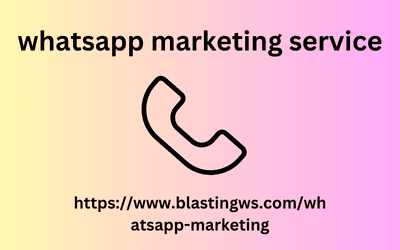Personalization is key to the success of any businessE-commerce businessAs we move into 2021.
Research shows that 71% of online shoppers express some level of frustration when the shopping experience isn’t personalized enough, and 33% of customers have completely ended their relationship with a company due to insufficient personalization.
However, personalization goes beyond simply addressing the end user by name.
In this article, we’ll take a closer look at what eCommerce personalization is and how you can use it to increase your conversion rates.
E-commerce personalization explained
A personalized e-commerce experience is whatsapp marketing service one that presents customers with offers and content that are tailored to them and their wants and needs. This includes product recommendations and blog posts, and it also extends to your website and email campaigns.
Personalization works by taking visitor data and using it to understand each person’s desires. For example, past purchases can be used to improve product recommendations. The result is that each customer sees fewer and fewer things.What they don’t want, and more of what they really want.
In other words, they can see relevant offers. This achieves a few goals:
- Improve your chances of customers staying on your website48%of customers are willing to wait longer to receive personalized offers, which increases bounce rates
- Improve conversion rates91% of customers are more likely to shop with a brand that recommends products they are interested in
- Improve overall customer experience and loyalty, making your customers feel that you care about them. As a result, your relationship with them will improve
7 eCommerce personalization implementations
So, personalization is ultimately about meeting the needs of your customers. It takes time, commitment, and investment. But if you do it right, the end results will justify your investment.
Here are 7 types of eCommerce personalization you can implement today:
1. Analysis and positioning
Profiling and targeting are the cornerstones of an eCommerce personalization strategy. As your customers browse your website, you’re essentially tracking and collecting data about them, gaining insights into their preferences and shopping habits. You can then use these insights to a) create customer profiles and b) target them with personalized offers.
This is where machine learning comes in.
Machine learning processes on-site customer data and information for you (specifically behavioral targeting points). It then processes this data and allows you to create personalized landing pages that a) segment your audience and b) target specific customers with offers that are relevant to them.
This way, you can build customer profiles and target them with offers designed to improve their user experience and conversion rates.
For example, if winter is approaching, a clothing retailer might want to create a landing page for relevant seasonal products. However, machine learning will tailor what each person sees based on their own personal preferences as well as other things like high-performing items and items in stock or on sale.
Here are some other ways you can segment your traffic and target specific customers:
I. Targeting returning customers
People who have visited (both customers and non-customers) already have a browsing history, and you can leverage that history to create a section called “Recently Viewed Items.”
You can also show them items that people with similar interests also viewed.
This is similar to how Netflix implements the “Continue Watching” feature. Essentially, you allow customers to pick up where they left off. Not only does this make customers feel at home, it also encourages them to buy.
2. Target new customers
For new customers, you can target them by showing a pop-up with a coupon that offers, for example, 10% off their first order.
Another option is to create a landing page that welcomes new customers with a greeting such as “Welcome to your new favorite clothing store.” You can then add if you have an additional bachelor’s degree a call to action in the form of a button to help customers get started. The button text should be simple and stress-free, even as simple as “Get Started.”
These little things go a long way in personalizing the customer experience and are especially helpful in making new customers feel special and welcome.
2. Use personalized pop-ups
The problem is that too many businesses use intrusive pop-ups instead of intuitive and engaging ones. By personalizing pop-ups based on user data such as browsing behavior, cart value, and number of sessions, you canE-commerce Pop-upsMore intuitive, more attractive – and therefore more popular with end users. :
You should also make sure you’re targeting the right customers with the right offers. For example, previously we saw the value of targeting and analytics. You can use any data you collect about individual users to target them with discounts or even complementary products that are relevant to where they are in their customer journey.
Meanwhile, new visitors might see a pop-up offering a percentage off their first purchase, while customers who already have items on their site might see a pop-up offering a percentage off their first purchase.CartCan be targeted at complementary products orfree shipping.
3. Implement device-based personalization
User behavior is different on desktop and mobile devices. Therefore, it is important to improve the user experience by implementing device-based personalization.
According to aThe survey showed that mobile users crawler data reported a number of issues with online stores. These included difficulty creating an account (50% of users), checkout issues (100% of users), and irrelevant content (63% of users).


